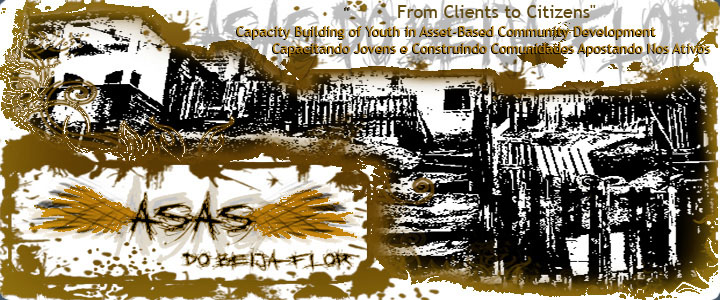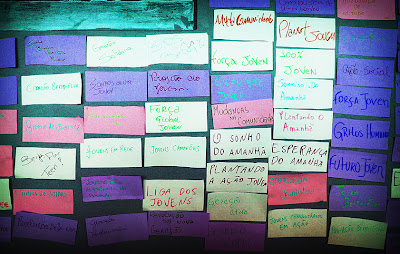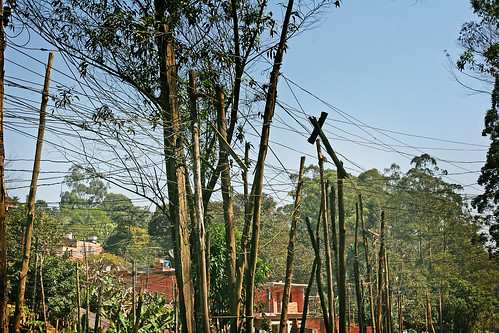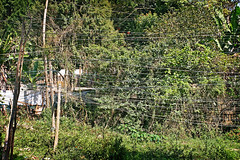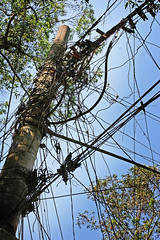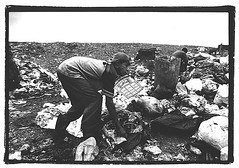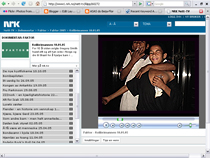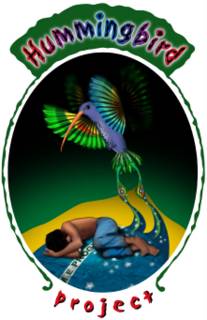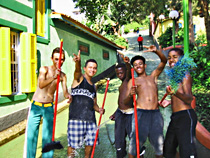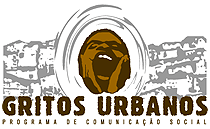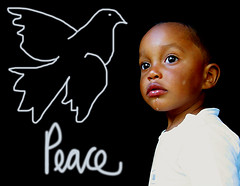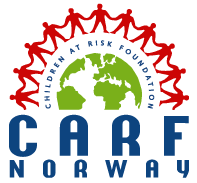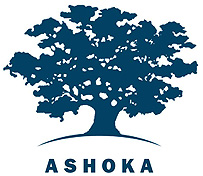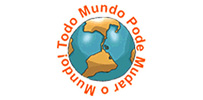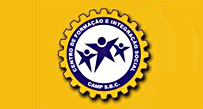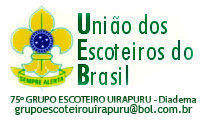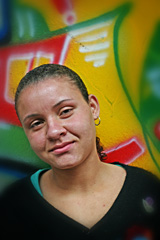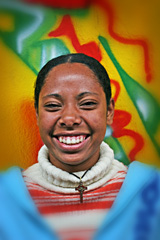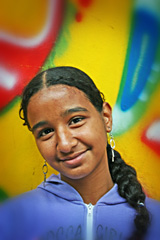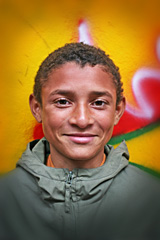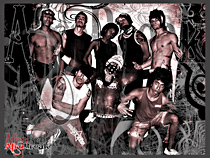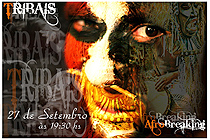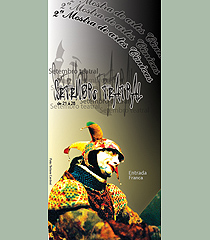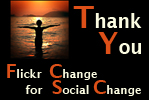 25 young people getting ready to fly......
25 young people getting ready to fly......During their first week of activities, our ASAS group was given the task of organizing their first casual get together to include family and friends, staff, volunteers and some of the partners and community involved with this project. It was a moment to enjoy some good home-made Hummingbird food, live music and a chance for everyone to get to know one another in a relaxing and informal atmosphere.
 Preparing artistic décor for our social gathering.
Preparing artistic décor for our social gathering. Our 25 youth in the programme had already been divided into five different groups earlier in the week; in connection with their individual group projects to be developed throughout the year, which we will explain in a later article on this Blog. Each group was given responsibilities for specific tasks; cleaning and preparation, decoration of the locality, preparation of the food, reception and programme during our social gathering, and serving of the meal.
 All eyes on Hummingbird...
All eyes on Hummingbird...Having felt comfortable with their choice of project name earlier in the week, decorating our festive hall with Hummingbirds in flight was an obvious choice for the group responsible for the décor. Before the weekend arrived, they had already produced a selection of beautiful, hand-painted Hummingbirds ready to be hung from the ceiling.



Brightly coloured birds with glittering details soon filled the air and shimmered under the warm lighting in the soft afternoon breeze as we prepared our festive hall for the evening. In all shapes and sizes, these magnificent birds soon created an entirely different atmosphere than what was otherwise usual in this great hall, where our children usually practice dancing and drumming during the week. The five groups worked eagerly together preparing everything for their evening get-together. The kitchen group were kept busy helping to prepare a traditional Brazilian meal called
Feijoada, which is no easy task considering the number of people we expected. This kind of stew is prepared with black turtle beans together with a variety of salted pork and beef products such as pork trimmings like ears, tail and feet, bacon, smoked pork ribs, at least two types of smoked sausage and jerked beef, served with fresh greens and
farofa. At Hummingbird such a special meal is served in traditional wooden
gamelas with a wooden spoon.
 Jefferson attacks the cooking pans in preparation for the big meal.
Jefferson attacks the cooking pans in preparation for the big meal.A good
feijaoda needs really big pans with plenty of room for the beans to expand and loads of salted pork trimmings. The job of cleaning up those pans afterwards is much bigger than washing them beforehand, as Jefferson soon discovered.
 Isabelli serves the feijoada assisted by Sheila and Patrícia.
Isabelli serves the feijoada assisted by Sheila and Patrícia. As
Feijaoda has strong connections to the history of slavery, we sometimes serve it at our
Capoeira graduation ceremony. Although it was once prepared from leftovers on the slave-run colonial farms,
Feijaoda is today considered a feast and very much appreciated by our guests, who were served at their tables by most capable members of the
ASAS do Beija-Flor youth group, who were dressed in slave constumes for the occasion.
 Jonas, Rafael, Roberta and Wallison feeling rather shy in their new outfits and getting ready to serve the feijoada laid out on the long table below.
Jonas, Rafael, Roberta and Wallison feeling rather shy in their new outfits and getting ready to serve the feijoada laid out on the long table below.
Of course, music is always an asset on such moments and happily our Hummingbirds have a variety of live music to offer for almost any occasion due to the wealth of cultural and artistic activities cultivated at our prevention centre. This time, the choice fell upon our
Grupo de Choro, who provided some really good Brazilian popular music for the evening.

 Renan enjoys a peaceful moment together with his mother, step-father, brother and sisters. All good reason to be proud of his family.
Renan enjoys a peaceful moment together with his mother, step-father, brother and sisters. All good reason to be proud of his family.As good music was essential to make this an enjoyable evening, then nothing better than good friendships to go with it. As most of the youth in our capacity building programme already cultivate friendly relationships with each other due to their long-term participation at Hummingbird, widening their circle of friends with newcomers to our centre was no difficult task. Parents, guardians, volunteers and partners alike were made to feel most welcome and were quickly integrated with our “family”.
 A proud mother with her beloved son, Leonardo.
A proud mother with her beloved son, Leonardo. Volunteers and Partners...
Volunteers and Partners...Speaking of volunteers and partners, one of the main objectives of this evening was to unite as many of those involved with the
ASAS do Beija-Flor project and to present them to each other for a better understanding of the importance of each one’s participation during the course of the year. Djalma and Carlos, our two youth leaders, were given the task of presenting each of our guests to the public. Unfortunately, not everyone could be present on the evening but they assured us that there would be other opportunities to meet during the year.
An important aspect of capacity training for the 25 young people in the
ASAS do Beija-Flor project will be for them to conceive and develop five different social projects directed at
Sítio Joaninha, where we are implanting our first Hummingbird Community Nucleus. Each of the five groups have been allocated a volunteer professional as group facilitator, with knowledge and practice from within one of the following themes; Health – Environment – Income Generation – Nutrition – Social Communication.
 Mieko Nakamura
Mieko Nakamura has for many years been Chief Scout for the
75º Grupo Escoteiro Uirapuru in the municipality of Diadema, situated only a few minutes walk from our Hummingbird Arts & Cultural Activity Centre. Mieko has also been involved with Hummingbird since the early years and even served a period as Vice-President on the Brazilian Board of Directors ("always prepared"). Several of our former street children served as scouts with her group during their first years of recuperation. Mieko is now lending us her Scout Group Uirapuru’s headquarters for many of our youth group’s training activities and is herself the volunteer group facilitator for the ASAS Health Group.
Mieko is an Obstetrician, based at the local health station where she works with the team of Doctors and nurses who serve the region which includes
Sítio Joaninha. The ASAS Health Group will be conceiving and developing a project to prevent the use of alcohol during pregnancy, which can cause FASD or Fetal Alcohol Spectrum Disorders in children. More about this important theme will be presented in a later article on this Blog. As there exists little public information on the subject to assist those attending the population and the population itself, this project could open the pathway to resolving that and Mieko embraced the opportunity to be part of such an effort from the very beginning.

Another of our highly valued volunteer group facilitators present at this social gathering was
Virgílio Alcides de Farias, a well-known regional environmental activist and President of the
Movimento em Defesa da Vida do Grande ABC - MDV, also a close neighbour of Hummingbird. Virgílio has been working for many years to protect one of São Paulo’s largest drinking water resources, the Billings Reservoir, which boarders our Hummingbird Arts & Cultural Activity Centre and has been the victim of uncontrolled pollution from the mega city for decades. Environmental protection has been Virgílio’s crusade for most of his life and today an important project he works on in cooperation with the environmental organization
SOS Mata Atlântica, is the programme
Observing the Rivers, which capacity builds youth in monitoring the water quality of streams and rivers leading from the watershed regions, of which
Sítio Joaninha is one of those areas.
One of the first actions Virgílio has invited the cultural participation of our Hummingbirds, is on the
Mobilization Day
for the River Tietê (Mobilização Dia do Rio Tietê) combined with the
World Carfree Day on September 22nd. We aim to be there!
We are also confident that under his dedicated guidance, the ASAS Environmental Group will eventually conceive and develop an interesting environmental project that will benefit and educate the
Sítio Joaninha community in the right direction.
Unfortunately our other volunteer facilitators were unable to come to our social gathering this evening due to other compromises, but we will surely be presenting them in later articles on this Blog.

As with all social development projects Hummingbird depends on solid partnerships.
Palas Athena is one such partner and one that we have great expectations for in connection with this project. We began cultivating a relationship with this Brazilian NGO, dedicated to fostering and managing community-oriented programs and projects in the fields of Education, Healthcare, Human Rights, Environmental Preservation, and Social Welfare a couple of years ago, when our youth did a cultural presentation at a
Martin Luther King Commemorative Week where Palas was also involved. Since that first contact we have been reaping the benefits of their valuable services in capacity building youth from Hummingbird. Palas Athena is situated in the financial heart of the city centre, near Avenida Paulista, quite in contrast to our Hummingbird Centre near the impoverished
favelas (shanties). This is their first undertaking with such a large and concentrated group of youth from an underprivileged peripheric community of São Paulo and we are both looking upon this as a pilot project for the capacity building of youth entrepreneurs from communities connected to NGOs. Hopefully, our experience will serve as a model for other NGOs in search of a solution.
Representing Palas at our social gathering were
Paulina and
Flávia, who expressed their joy of being part of this important learning process in the development of youth groups from Asset-based community development projects such as ours.
 Getting ready to fly......................
Getting ready to fly......................
Fly, Hummingbirds Flyyyyyyyyyyyyyyyyy!Portuguese summary - Resumo em Português.As fotos traduzam exatamente o que aconteceu, um grande encontro que reuniu os 25 jovens, seus familiares, amigos, apoiadores e os facilitadores – os profissionais voluntários que estão conduzindo o desenvolvimento de cinco projetos direcionados à comunidade do Sitio Joaninha, uma região com diversos problemas sócio-econômicos e ambientais localizada na divisa de Diadema com São Bernardo do Campo, ABC Paulista - SP.
Para dá a ponta-pé inicial, foi organizada uma divertida confraternização, e os organizadores e executores foram os nossos 25 jovens. Divididos em cinco equipes, na verdade, os mesmos cinco grupos que estão desenvolvendo os cinco projetos mencionados acima. Responsáveis pela decoração, preparação da feijoada, recepção dos convidados e desenvolvimento do evento, além das equipes de limpeza e a equipe responsável para servir os convidados. Eles colocaram literalmente a mão na massa e preparam uma aconchegante e descontraída noite de sábado.
Parceiros como o Ambientalista Virgílio, a Chefe dos escoteiros Mieko Nakamura e a Professora de Inglês Mary Anne, estiveram presentes, além da Flávia e Paulina, representantes do Palas Athena, profissionais responsáveis pelos projetos educacionais do Palas junto com Christiane Araújo, que infelizmente não pode comparecer. Todos puderam falar um pouco de como está sendo participar de um projeto como este e das expectativas para as próximas fases.
Por todo o salão da festa, pode-se notar a presença dos beija-flores, objetos produzidos não apenas para decorar, mas para reforçar o nome escolhido pelo grupo há alguns dias atrás, Asas do Beija-Flor será usado como nome fantasia do Projeto Transformando Clientes em Cidadãos. As delicadas criações da equipe de decoração trouxe cor, brilho e muita leveza para o local da festa – o galpão utilizado para oficinas de dança, percussão e outros eventos promovidos pelo ECBF – Espaço Cultural Beija-Flor.
Os resplandecentes pássaros, à medida que foram ficando prontos, preenchendo pouco a pouco os espaços no teto do salão, os pequenos beija-flores ganhavam vida, sendo embalados pelo vento suave que entrava pela porta larga da entrada e que ficara aberta para circulação das equipes, enquanto preparavam tudo para logo mais à noite.
De várias formas e tamanhos, estes pássaros magníficos deram uma atmosfera peculiar e convidativa, totalmente atípica. O grupo que preparou a comida servida no evento, experimentou uma instigante tarefa, preparar uma feijoada tradicional que por sua vez, foi servida inteiramente a caráter, em pratos – gamelas, como são chamados - e servidos por jovens vestidos de escravos, uma tarefa difícil, pois não se tinha o número exato de convidados, apenas uma base responsável por demandar muito trabalho para estas equipes de jovens, ansiosos e dedicados.
Como é de conhecimento da maioria do povo brasileiro, até quem nunca comeu, com certeza já ouviu falar da feijoada que é preparada com feijão preto e acrescido com diversos tipos de carnes e outros elementos culinários, e que incrementam este prato, nada leve e muito saboroso servido com acompanhamentos simples, mas de valioso poder de composição à feijoada, como couve e farofa, todos frescos e bem temperados.
Naturalmente, a música não poderia deixa de nos visitar neste maravilhoso evento, e ela veio através do Grupo de Choro do ECBF – comandada por Carlos, Altair e seus alunos, proporcionando momentos agradabilíssimos, que relaxou a todos e não deixou de homenagear a música popular brasileira. Um Brasil de uma diversidade cultural extraordinária, representada nesta atividade pela culinária, indumentária, música e a alegria de seus convidados.
Retratos comuns da festa foram às famílias reunidas nas mesas espalhadas por todo o salão, sorrisos que demonstravam um mútuo orgulho, entre os jovens e os seus parentes, principalmente pela satisfação em ter passado para a próxima fase do projeto, afinal aquele ocasião, também marcava o encontro com os vitoriosos da fase de seleção e isso, não pode ser um mérito só atribuído aos jovens, pois como critério de seleção o apoio, presença e desempenho dos pais e/ou responsáveis durante as entrevistas foi de fundamental importância e em alguns casos, até determinante para a escolha dos jovens.
Ao Djalma e Carlos, nossos dois líderes juvenis, foram dados a tarefa de apresentar cada um dos convidados ao público. Infelizmente, nem todos puderam estar presentes, mas nos asseguraram que haveria outras oportunidades durante o ano para nos reunirmos.
Um aspecto importante da capacitação dos 25 jovens do projeto ASAS do Beija-Flor, é o desenvolvimento dos cinco projetos sociais dirigidos ao Sítio Joaninha, comunidade onde a RCBF – Rede Cultural Beija-Flor está implementando seu primeiro núcleo. Para cada um dos cinco grupos foi convidado um profissional voluntário, chamado de facilitador, pessoas que estão trazendo todo seu acumulo de experiências e conhecimentos para compartilhar com seus grupos que estão divididos em temas distintos porém totalmente entrelaçados como Saúde, Meio Ambiente, Geração de renda, Nutrição e Comunicação Social.
 You can download the Projects Folder here.
You can download the Projects Folder here.